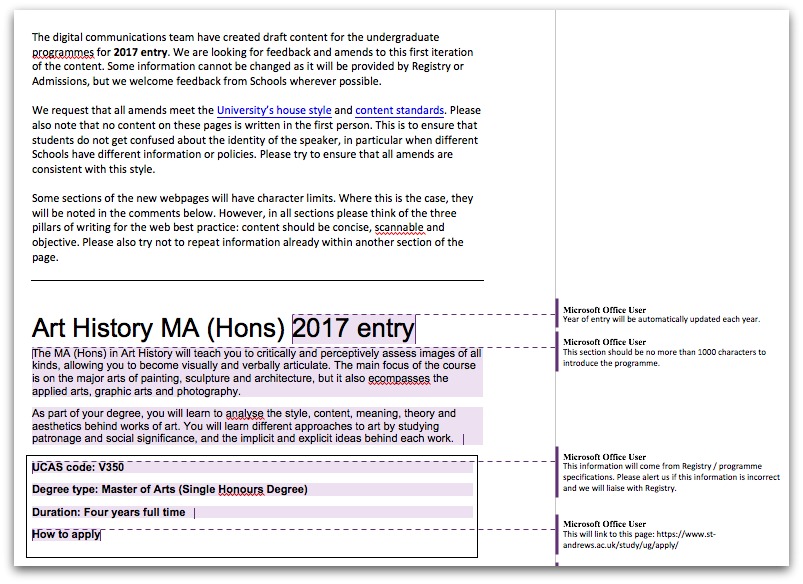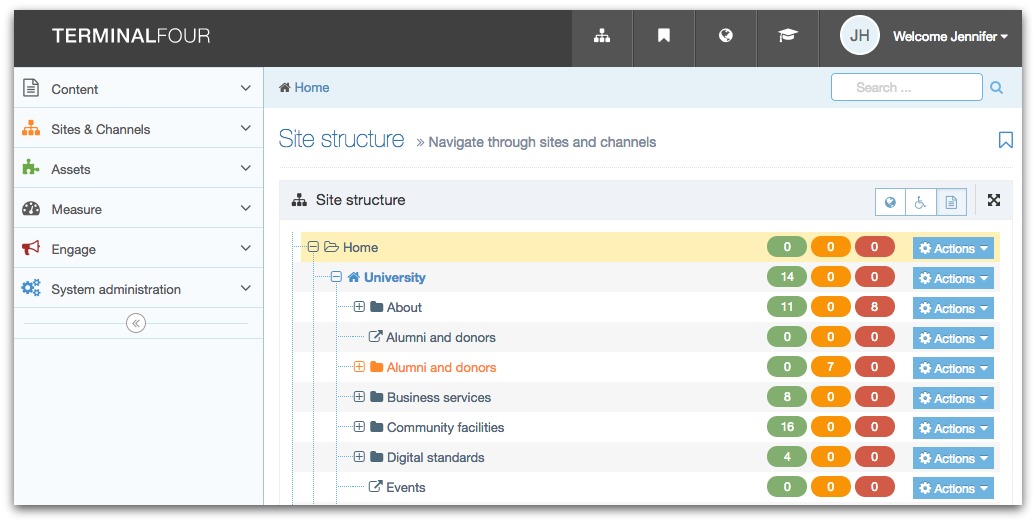The plan for 2018-entry undergraduate course pages
With the 2017-entry undergraduate course webpages only just completed, the thought of creating 2018-entry pages may make you cringe, bare your teeth, or just run away in horror. But don’t worry! The content team has developed a solid plan for creating and publishing the 2018 pages which aims to minimise the amount of work required from content coordinators.
Step 1: Compile a list of the 2018 UG programmes
Our first step is to create a spreadsheet with all of the undergraduate programmes running for the 2018-2019 academic year. On this spreadsheet, we will note any new or withdrawn courses based on our communications with publications and CAG.
Step 2: Create acceptance criteria
As we did for the 2017 pages, the content team will create a new set of acceptance criteria for the 2018 pages. This acceptance criteria will help us ensure the pages meet our latest standards in terms of house style, accessibility, and other content requirements.
We will also be looking to add in new information based on the Higher Education Funding Council for England’s (HEFCE) guide to providing information to prospectus undergraduate students. This new information should not drastically impact the overall look and feel of the webpages, but will add in more beneficial information for students interested in applying to St Andrews.
Step 3: Create Word documents of all 2018 pages
We intend to build the 2018 webpages in T4v8. Until we have v8 up and running, we will be working with the 2018 course content through Word documents.
To do this, we will pull content from the 2017 webpages. We will then update this content based on information Schools have already provided for the 2018 print Prospectus and note on the Word document where changes have been made.
As with the 2017 Word documents, the 2018 Word pulls will include an introductory text which explains what information content coordinators need to check for and provide. They will also include notes about character limits within sections and content which cannot be changed or altered by content coordinators.

Step 4: Meet with Schools which still need to approve course content
Members from the content team will conduct meetings with the few Schools whom we still need sign-off from for the digital prospectus content. Once the content for these pages have been signed-off, we will build the pages in T4v8 along with the rest of the undergraduate course pages.
Step 5: Send all Word documents to Schools
By this point, we will already have sent an initial communication email to all of our content coordinators within School explaining the process for launching the 2018 undergraduate course pages. This email will also detail the deadlines for returning content.
Step 6: Build the pages in T4v8
After we have sent out all the Word documents to Schools, we will begin building the 2018 course pages in our new content management system, T4v8. The look and feel of these pages will not change in the large part to how the 2017-entry pages looked. The only big difference will be the backend management.

Step 7: Make content amends
As Schools provide us with content amendments based on the Word documents, we will make the necessary changes to the pages we have built in T4v8.
After the changes have been made, we will send the amended pages back to Schools as links to the new T4v8 pages so that they can see how these changes would look on a live webpage. If there are any final alterations or issues, we will fix these.
Step 8: Final QA and launch
After the final deadline has passed for Schools to provide us with content amendments, we will check all of the pages for typos, link errors, house style and our acceptance criteria as part of a final QA. We will then be ready to launch the 2018 pages!
Final notes
Throughout this process, we will be keeping communications with Schools open through regular email correspondence and updates, our DAB meetings (which any member of staff is welcome to attend), the digital newsletter, and the blog. Please check these communication channels regularly to keep up to date on our progress. If you have any questions or concerns, please contact the team at [email protected].
